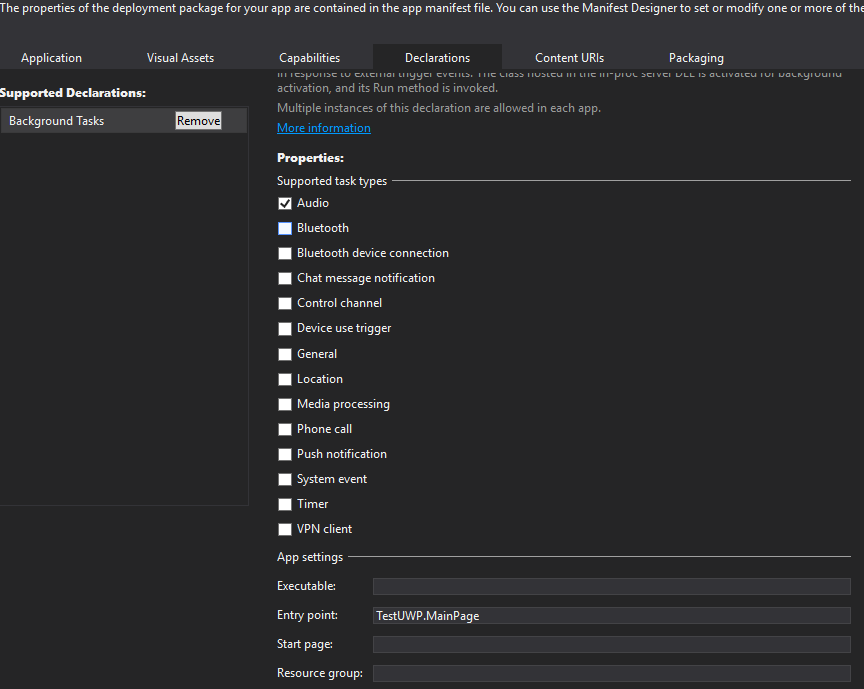You need to use SystemMediaTransportControls
Here is a basic setup with Play and Pause. If you like to enable more controls you can do using the available properties for ex.
systemControls.IsNextEnabled = true;
and you have to add the case in the button switch.
case SystemMediaTransportControlsButton.Next:
//handle next song
break;
xaml
<MediaElement x:Name="mediaElement" Height="100" Width="100" AreTransportControlsEnabled="True"/>
C#
public MainPage()
{
this.InitializeComponent();
systemControls = SystemMediaTransportControls.GetForCurrentView();
// Register to handle the following system transpot control buttons.
systemControls.ButtonPressed += SystemControls_ButtonPressed;
mediaElement.CurrentStateChanged += MediaElement_CurrentStateChanged;
systemControls.IsPlayEnabled = true;
systemControls.IsPauseEnabled = true;
}
private void MediaElement_CurrentStateChanged(object sender, RoutedEventArgs e)
{
switch (mediaElement.CurrentState)
{
case MediaElementState.Playing:
systemControls.PlaybackStatus = MediaPlaybackStatus.Playing;
break;
case MediaElementState.Paused:
systemControls.PlaybackStatus = MediaPlaybackStatus.Paused;
break;
case MediaElementState.Stopped:
systemControls.PlaybackStatus = MediaPlaybackStatus.Stopped;
break;
case MediaElementState.Closed:
systemControls.PlaybackStatus = MediaPlaybackStatus.Closed;
break;
default:
break;
}
}
void SystemControls_ButtonPressed(SystemMediaTransportControls sender, SystemMediaTransportControlsButtonPressedEventArgs args)
{
switch (args.Button)
{
case SystemMediaTransportControlsButton.Play:
PlayMedia();
break;
case SystemMediaTransportControlsButton.Pause:
PauseMedia();
break;
case SystemMediaTransportControlsButton.Stop:
StopMedia();
break;
default:
break;
}
}
private async void StopMedia()
{
await Dispatcher.RunAsync(Windows.UI.Core.CoreDispatcherPriority.Normal, () =>
{
mediaElement.Stop();
});
}
async void PlayMedia()
{
await Dispatcher.RunAsync(Windows.UI.Core.CoreDispatcherPriority.Normal, () =>
{
if (mediaElement.CurrentState == MediaElementState.Playing)
mediaElement.Pause();
else
mediaElement.Play();
});
}
async void PauseMedia()
{
await Dispatcher.RunAsync(Windows.UI.Core.CoreDispatcherPriority.Normal, () =>
{
mediaElement.Pause();
});
}
Output
![Output]()
Also if you want all this to work in background you will have to do a Declaration in Package.appxmanifest for a Background Tasks, enable audio and add an entry point like TestUWP.MainPage
![enter image description here]()



